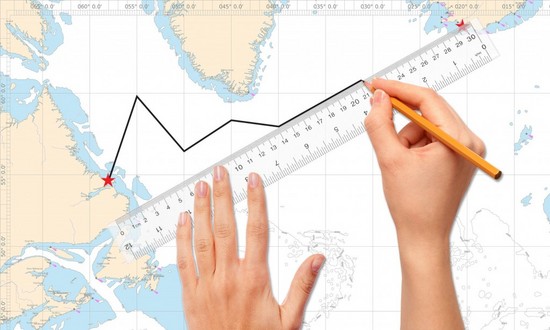PyTorch的SoftMax交叉熵损失和梯度用法
在PyTorch中可以方便的验证SoftMax交叉熵损失和对输入梯度的计算
关于softmax_cross_entropy求导的过程,可以参考HERE
示例:
# -*- coding: utf-8 -*- import torch import torch.autograd as autograd from torch.autograd import Variable import torch.nn.functional as F import torch.nn as nn import numpy as np # 对data求梯度, 用于反向传播 data = Variable(torch.FloatTensor([[1.0, 2.0, 3.0], [1.0, 2.0, 3.0], [1.0, 2.0, 3.0]]), requires_grad=True) # 多分类标签 one-hot格式 label = Variable(torch.zeros((3, 3))) label[0, 2] = 1 label[1, 1] = 1 label[2, 0] = 1 print(label) # for batch loss = mean( -sum(Pj*logSj) ) # for one : loss = -sum(Pj*logSj) loss = torch.mean(-torch.sum(label * torch.log(F.softmax(data, dim=1)), dim=1)) loss.backward() print(loss, data.grad)
输出:
tensor([[ 0., 0., 1.],
[ 0., 1., 0.],
[ 1., 0., 0.]])
# loss:损失 和 input's grad:输入的梯度
tensor(1.4076) tensor([[ 0.0300, 0.0816, -0.1116],
[ 0.0300, -0.2518, 0.2217],
[-0.3033, 0.0816, 0.2217]])
注意:
对于单输入的loss 和 grad
data = Variable(torch.FloatTensor([[1.0, 2.0, 3.0]]), requires_grad=True) label = Variable(torch.zeros((1, 3))) #分别令不同索引位置label为1 label[0, 0] = 1 # label[0, 1] = 1 # label[0, 2] = 1 print(label) # for batch loss = mean( -sum(Pj*logSj) ) # for one : loss = -sum(Pj*logSj) loss = torch.mean(-torch.sum(label * torch.log(F.softmax(data, dim=1)), dim=1)) loss.backward() print(loss, data.grad)
其输出:
# 第一组: lable: tensor([[ 1., 0., 0.]]) loss: tensor(2.4076) grad: tensor([[-0.9100, 0.2447, 0.6652]]) # 第二组: lable: tensor([[ 0., 1., 0.]]) loss: tensor(1.4076) grad: tensor([[ 0.0900, -0.7553, 0.6652]]) # 第三组: lable: tensor([[ 0., 0., 1.]]) loss: tensor(0.4076) grad: tensor([[ 0.0900, 0.2447, -0.3348]]) """ 解释: 对于输入数据 tensor([[ 1., 2., 3.]]) softmax之后的结果如下 tensor([[ 0.0900, 0.2447, 0.6652]]) 交叉熵求解梯度推导公式可知 s[0, 0]-1, s[0, 1]-1, s[0, 2]-1 是上面三组label对应的输入数据梯度 """
pytorch提供的softmax, 和log_softmax 关系
# 官方提供的softmax实现 In[2]: import torch ...: import torch.autograd as autograd ...: from torch.autograd import Variable ...: import torch.nn.functional as F ...: import torch.nn as nn ...: import numpy as np In[3]: data = Variable(torch.FloatTensor([[1.0, 2.0, 3.0]]), requires_grad=True) In[4]: data Out[4]: tensor([[ 1., 2., 3.]]) In[5]: e = torch.exp(data) In[6]: e Out[6]: tensor([[ 2.7183, 7.3891, 20.0855]]) In[7]: s = torch.sum(e, dim=1) In[8]: s Out[8]: tensor([ 30.1929]) In[9]: softmax = e/s In[10]: softmax Out[10]: tensor([[ 0.0900, 0.2447, 0.6652]]) In[11]: # 等同于 pytorch 提供的 softmax In[12]: org_softmax = F.softmax(data, dim=1) In[13]: org_softmax Out[13]: tensor([[ 0.0900, 0.2447, 0.6652]]) In[14]: org_softmax == softmax # 计算结果相同 Out[14]: tensor([[ 1, 1, 1]], dtype=torch.uint8) # 与log_softmax关系 # log_softmax = log(softmax) In[15]: _log_softmax = torch.log(org_softmax) In[16]: _log_softmax Out[16]: tensor([[-2.4076, -1.4076, -0.4076]]) In[17]: log_softmax = F.log_softmax(data, dim=1) In[18]: log_softmax Out[18]: tensor([[-2.4076, -1.4076, -0.4076]])
官方提供的softmax交叉熵求解结果
# -*- coding: utf-8 -*-
import torch
import torch.autograd as autograd
from torch.autograd import Variable
import torch.nn.functional as F
import torch.nn as nn
import numpy as np
data = Variable(torch.FloatTensor([[1.0, 2.0, 3.0], [1.0, 2.0, 3.0], [1.0, 2.0, 3.0]]), requires_grad=True)
log_softmax = F.log_softmax(data, dim=1)
label = Variable(torch.zeros((3, 3)))
label[0, 2] = 1
label[1, 1] = 1
label[2, 0] = 1
print("lable: ", label)
# 交叉熵的计算方式之一
loss_fn = torch.nn.NLLLoss() # reduce=True loss.sum/batch & grad/batch
# NLLLoss输入是log_softmax, target是非one-hot格式的label
loss = loss_fn(log_softmax, torch.argmax(label, dim=1))
loss.backward()
print("loss: ", loss, "\ngrad: ", data.grad)
"""
# 交叉熵计算方式二
loss_fn = torch.nn.CrossEntropyLoss() # the target label is NOT an one-hotted
#CrossEntropyLoss适用于分类问题的损失函数
#input:没有softmax过的nn.output, target是非one-hot格式label
loss = loss_fn(data, torch.argmax(label, dim=1))
loss.backward()
print("loss: ", loss, "\ngrad: ", data.grad)
"""
"""
输出
lable: tensor([[ 0., 0., 1.],
[ 0., 1., 0.],
[ 1., 0., 0.]])
loss: tensor(1.4076)
grad: tensor([[ 0.0300, 0.0816, -0.1116],
[ 0.0300, -0.2518, 0.2217],
[-0.3033, 0.0816, 0.2217]])
通过和示例的输出对比, 发现两者是一样的
以上这篇PyTorch的SoftMax交叉熵损失和梯度用法就是小编分享给大家的全部内容了,希望能给大家一个参考,也希望大家多多支持【听图阁-专注于Python设计】。

